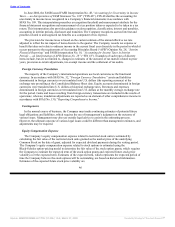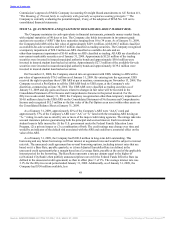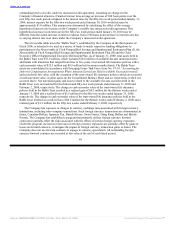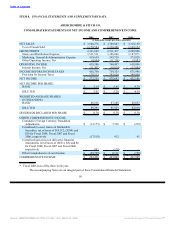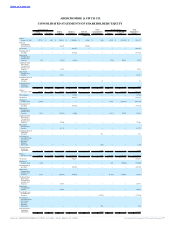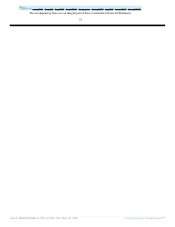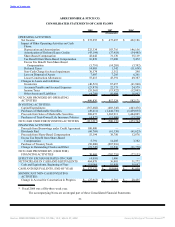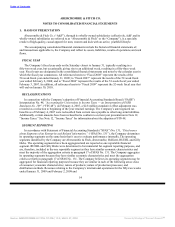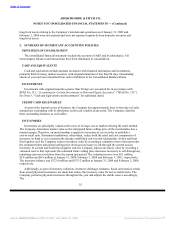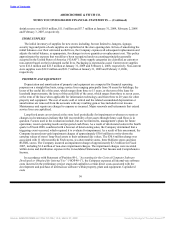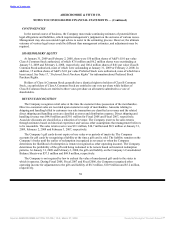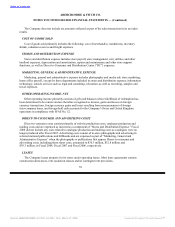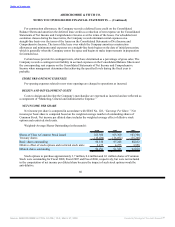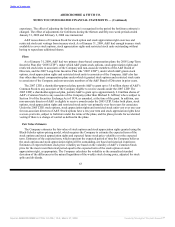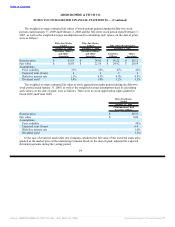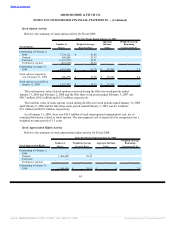Abercrombie & Fitch 2008 Annual Report Download - page 59
Download and view the complete annual report
Please find page 59 of the 2008 Abercrombie & Fitch annual report below. You can navigate through the pages in the report by either clicking on the pages listed below, or by using the keyword search tool below to find specific information within the annual report.
Table of Contents
ABERCROMBIE & FITCH CO.
NOTES TO CONSOLIDATED FINANCIAL STATEMENTS — (Continued)
long-lived assets relating to the Company’s international operations as of January 31, 2009 and
February 2, 2008 were not material and were not reported separately from domestic revenues and
long-lived assets.
2. SUMMARY OF SIGNIFICANT ACCOUNTING POLICIES
PRINCIPLES OF CONSOLIDATION
The consolidated financial statements include the accounts of A&F and its subsidiaries. All
intercompany balances and transactions have been eliminated in consolidation.
CASH AND EQUIVALENTS
Cash and equivalents include amounts on deposit with financial institutions and investments,
primarily held in money market accounts, with original maturities of less than 90 days. Outstanding
checks at year-end are reclassified from cash to liabilities in the Consolidated Balance Sheets.
INVESTMENTS
Investments with original maturities greater than 90 days are accounted for in accordance with
SFAS No. 115, “Accounting for Certain Investments in Debt and Equity Securities” (“SFAS No. 115”).
See Note 5, “Cash and Equivalents and Investments” for additional detail.
CREDIT CARD RECEIVABLES
As part of the normal course of business, the Company has approximately three to four days of sales
transactions outstanding with its third-party credit card vendors at any point. The Company classifies
these outstanding balances as receivables.
INVENTORIES
Inventories are principally valued at the lower of average cost or market utilizing the retail method.
The Company determines market value as the anticipated future selling price of the merchandise less a
normal margin. Therefore, an initial markup is applied to inventory at cost in order to establish a
cost-to-retail ratio. Permanent markdowns, when taken, reduce both the retail and cost components of
inventory on hand so as to maintain the already established cost-to-retail relationship. At first and third
fiscal quarter end, the Company reduces inventory value by recording a valuation reserve that represents
the estimated future anticipated selling price decreases necessary to sell-through the current season
inventory. At second and fourth fiscal quarter end, the Company reduces inventory value by recording a
valuation reserve that represents the estimated future selling price decreases necessary to sell-through any
remaining carryover inventory from the season just passed. The valuation reserve was $9.1 million,
$5.4 million and $6.8 million at January 31, 2009, February 2, 2008 and February 3, 2007, respectively.
The inventory balance was $372.4 million and $333.2 million at January 31, 2009 and February 2, 2008,
respectively.
Additionally, as part of inventory valuation, inventory shrinkage estimates, based on historical trends
from actual physical inventories, are made that reduce the inventory value for lost or stolen items. The
Company performs physical inventories throughout the year and adjusts the shrink reserve accordingly.
The
55
Source: ABERCROMBIE & FITCH CO /DE/, 10-K, March 27, 2009 Powered by Morningstar® Document Research℠


